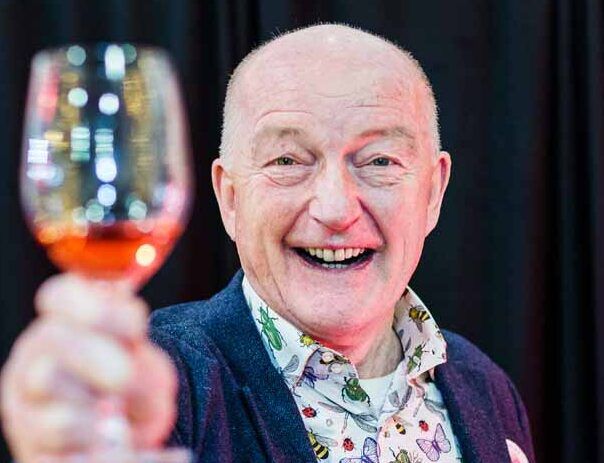“So the locals may well have huffed and puffed when the family arrived but now they can huff and puff in an Alfa Romeo rather than on a bicycle,” Clarke laughs.
Showcasing six innovative wines at ten o’clock in the morning is a fairly brisk way to start the day, unusually early given there are no international time zones to circumnavigate. With Oz Clarke in the driving seat, however, you know you are in safe hands. Part thesp, part journo, his encyclopaedic knowledge, unbridled enthusiasm and engaging delivery makes for a particularly pleasing way to start any day. It’s like listening to Start The Week on Radio 4, with a glass in your hand.
The other thing about Oz, is that he makes it feel like the most natural thing in the world to be popping six corks before elevenses.
“The first thing I’ve got to do is pour myself some wine,” he begins… at 10.02am.
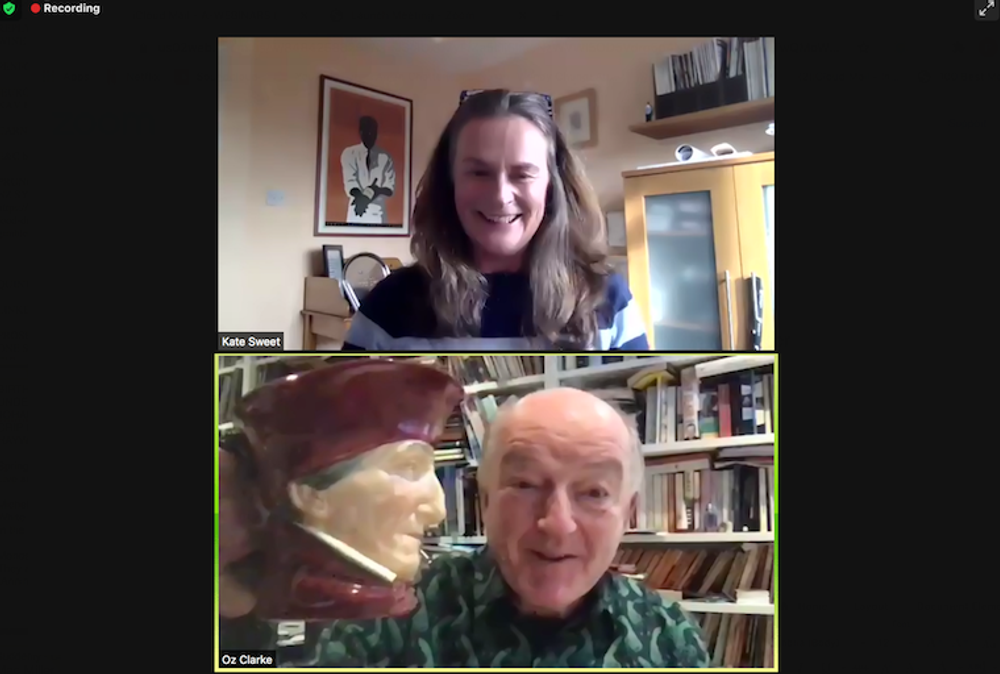
Oz Clarke shows off his spittoon. (PR guru Kate Sweet top)
The format of this tasting called Louis Latour – Tales of the Unexpected is for Oz to show what an innovative company Louis Latour Agencies is by selecting six wines that he finds ‘interesting, delightful and surprising’, and explaining why they break away from the norm. He kicks off by explaining that innovation runs through the company like lettering in a stick of rock, ever since it was established in 1797 (having been growers since 1731).
“They’ve always been amazingly innovative, I’m going going back 150 years or more now, the third Louis Latour was the first person in Burgundy to realise that you could defeat phylloxera by grafting Pinot Noir and Chardonnay onto American root stocks.”
“Secondly, they led the way in terms of planting Chardonnay on the limestone soils of what is now Corton Charlemagne – when they started doing this there was Pinot Noir and Aligote still there. They paved the way to make it a white-only Grand Cru. And they also constructed concrete channels to collect soil washed down those steep Corton slopes that would otherwise be washed into the municipal drains and carted it back up onto the top of the Grand Cru vineyards.”
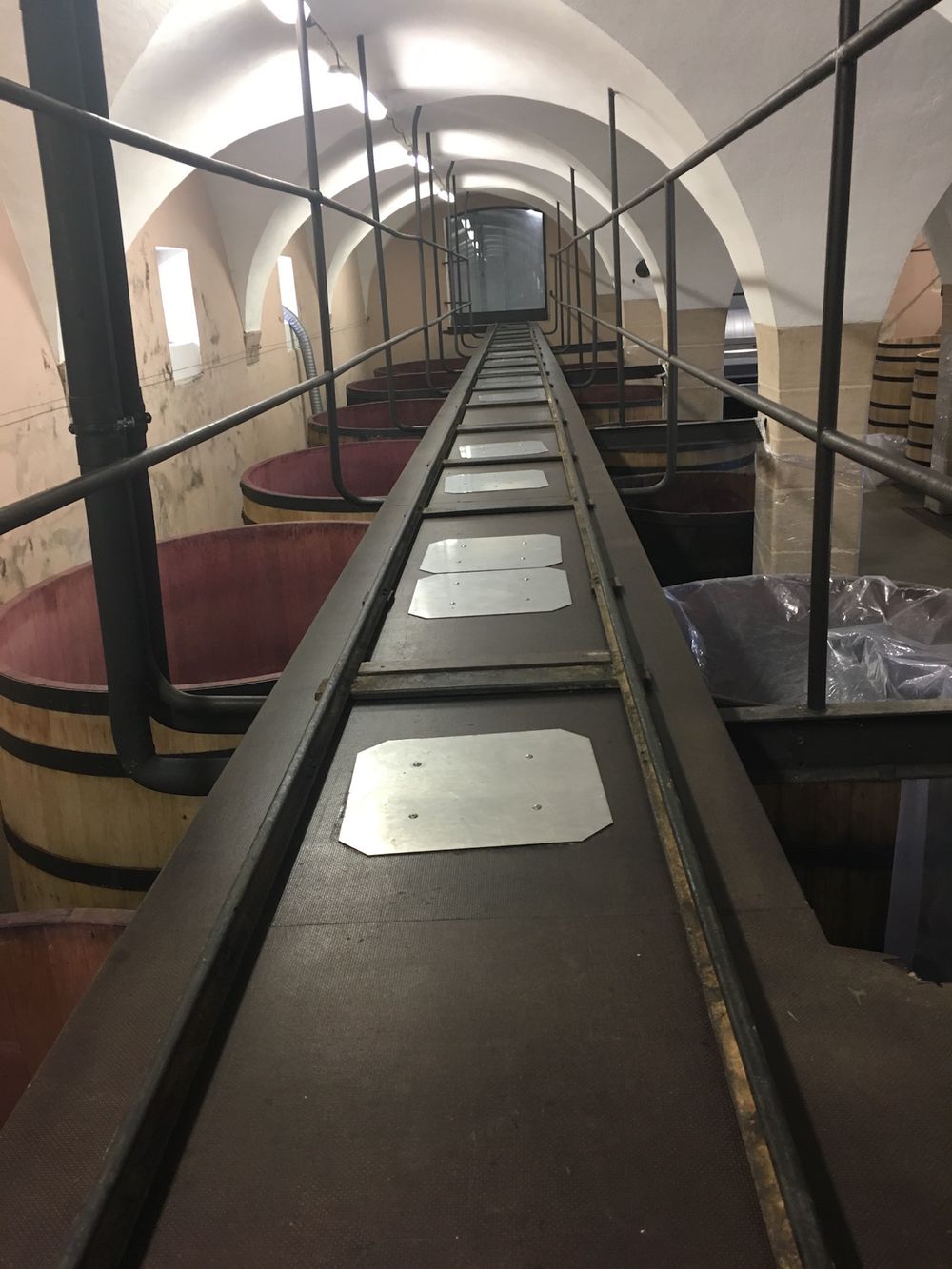
The Louis Latour winery in Aloxe-Corton was built with overhead rail to make it a pioneering gravity-fed system
Clarke then cites Latour’s nineteenth century winery in Aloxe-Corton which was constructed as a gravity-fed facility, were pioneers in oak, buying their own sections of oak in key woodlands, and seasoning it at their own yards and own cooperage.
“And then when you come into the 20thcentury – in 1979 – they planted 350 hectares of vines in the Ardeche, they were the first of the negociants to expand outside Burgundy, as they wanted a Macon-like white wine and, with its clay-limestone soils, the Ardeche is fabulous Chardonnay land.”
Clarke adds that sustainability has also been a central philosophy for the company for many years citing the likes of its agencies such as McHohnen, Pyramid Valley and Wakefield “which was the first carbon neutral wine brand.” Also, for the past 20 years organics have been key to them, with no insecticides, herbicides and pesticides being used “this philosophy runs right through the company,” he says before adding, “right, let’s taste some wine before we all lose the will to live.”
Reviving the fortunes of the Coteaux de L’Auxois
The first wine Clarke chooses is from Chablis producer Simonnet-Febvre, which Louis Latour purchased in 2003, and is perhaps best known for being a textbook Cremant de Bourgogne producer.
Glass in hand, and with his intonation now sounding like the narrator of Horrible Histories, Clarke tells the riches-to-rags tale of the Greater Chablis area called the Auxois or the Yonne which, before phylloxera, was the largest wine producing area in France with nearly 50,000 hectares of highly regarded vineyards.
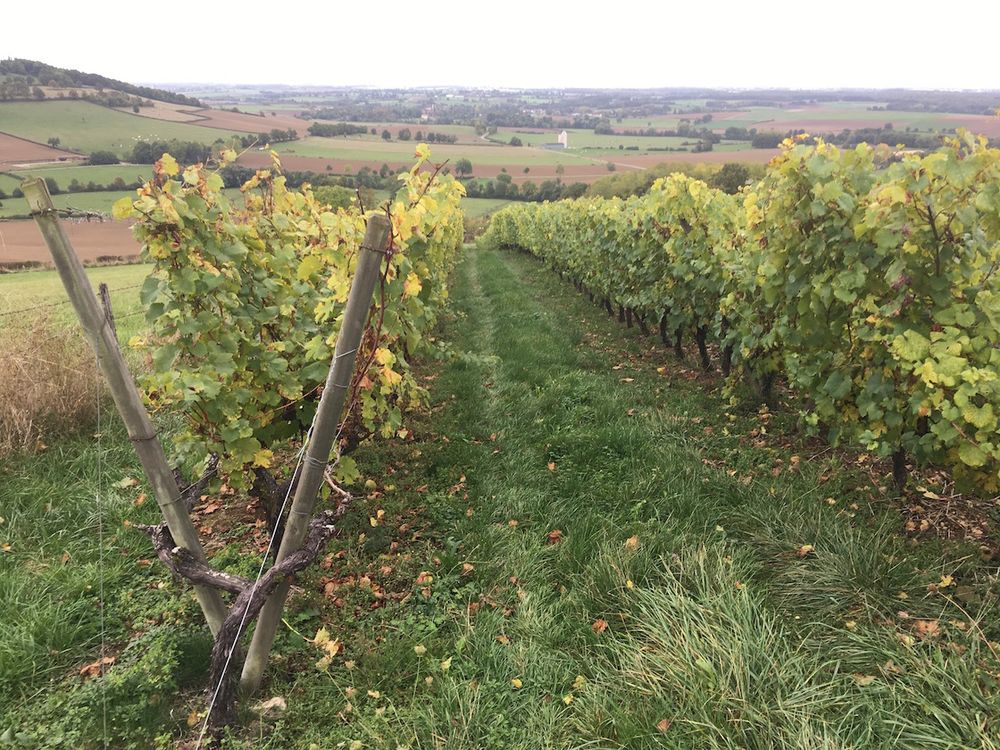
The Auxois’ rolling hills could replicate nearby Chablis. Traditional lyre vines owned by Latour.
But things turned out rough for the region: the widely planted, high-yielding Gouias Blanc “called the ‘shit grape’ 400 years ago,” Clarke says with glee; the coming of the railway which allowed better wines to travel up to Paris from the South of France; and then phyloxerra finished the region off – certainly as a wine region, although it is still highly regarded for the quality of its beef. “They had one area called Clos Migraine, so you can get an idea of what kind of wine they made there,” Clarke adds.
The innovation at play here was how current chief, Louis Fabrice Latour, saw the Coteaux de L’Auxois as a way of expanding out of Chablis.
“He saw the land was cheap, climate change was making ripening a relatively simple matter, when Louis Fabice found the hills of Auxois he said ‘this could be the Chablis of 30 years ago’ – it is classic Louis Latour behaviour… the soil is similar, in fact the Southern tip of the Coteaux de L’Auxois is only 12km from Beaune – it’s the same clay/ limestone soil as Monthélie – so he bought a chunk of existing vineyards and planted more with the aim of having 60 hectares of vines,” Clarke says.
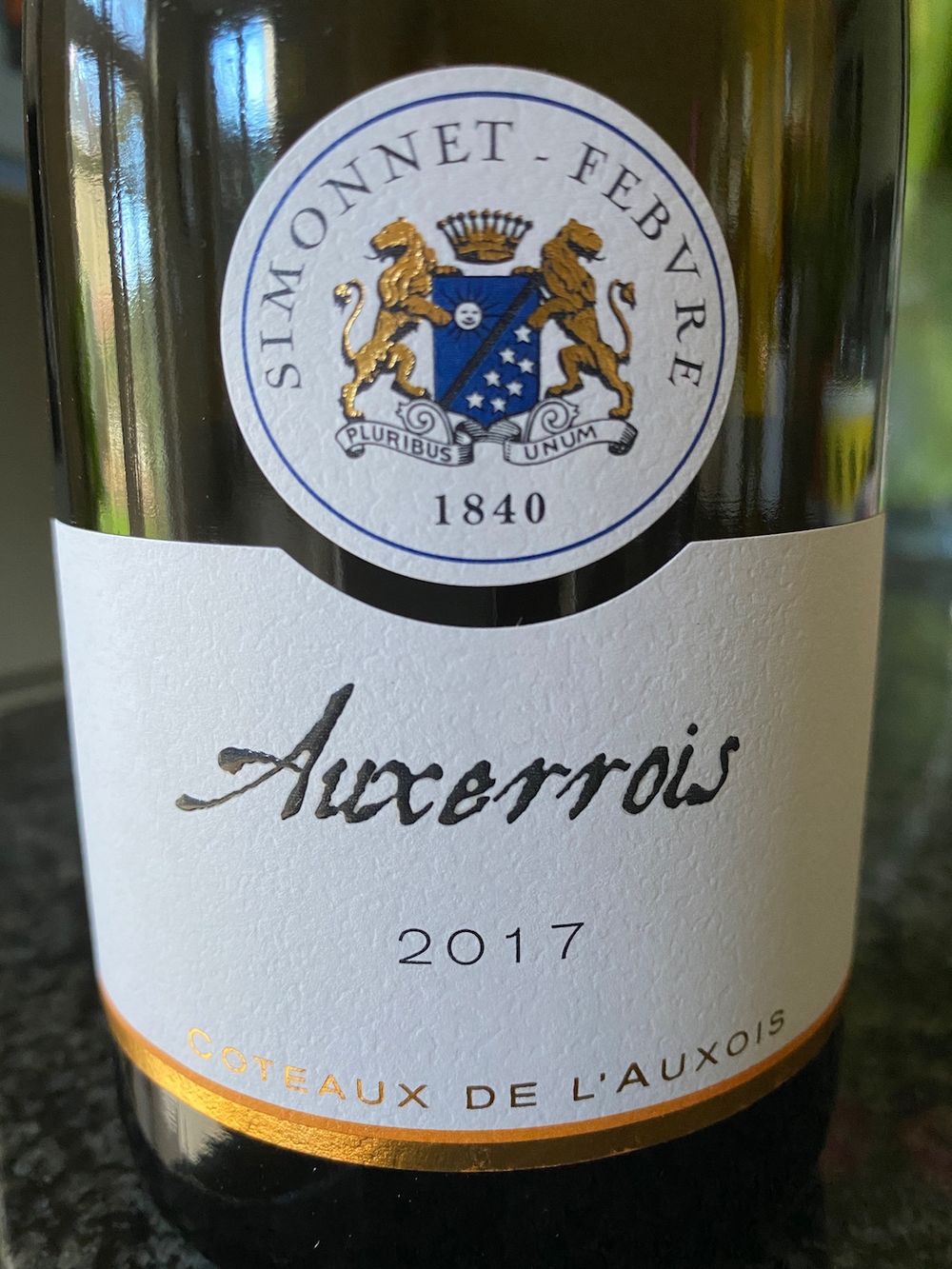
Simonnet-Febvre, Auxerrois 2017, Coteaux De L’Auxois
Of the four varieties that Latour is planting in the Auxois – Pinot Gris, Auxerrois, Chardonnay and Pinot Noir – this Pinot Blanc lookalike is the one Clarke thinks is tasting the best to date, and I have to agree. This wine is showing how this region is making wines of approachability, affordability and with a good deal of class.
To look at the wine is pale yellow with an attractive bouquet of fruit and flowers, think a basket of mixed fruit, fruit salad, white flowers; the palate has a slightly waxy, chewy quality with green peach, greengage, a delicious creamy toffee note, ending on a slightly salty tang, that encourages a second glass. Nice balance, good acidity, really well made solid wine and at around the £13 retail mark it’s remarkable good value for money.
Planting Vermetino in Tuscany
“Another wine that is completely ‘outside of the box’ is this Vermentino from Banfi because Banfi made its reputation with powerful reds,” Clarke begins.
He explains that the Mariani family has always been innovative from the first time that they bought land in Montalcino in 1978, an estate that by 1983 was 2830 hectares in size “making it the largest contiguous estate in the whole of Europe.” The largest US importer of wine at the time, their importing of Montalcino into the US was largely responsible for the explosion of interest in Montalcino which, in the late 1970s was just 100 ha small. “So the locals may well have huffed and puffed when the family arrived but now they can huff and puff in an Alfa Romeo rather than on a bicycle,” Clarke laughs.
He explains that Banfi has always been strong on innovation and sustainability: “Since 2009 they have reduced their bottle weight by 40%, reduced vineyard water by 80%, they have always been big on research and found 650 different clones of Sangiovese on their land alone, they have been planting heat-resistant varieties, and developed this fascinating steel/ oak vat system.”
As part of this market-leading philosophy, Clarke says, Banfi is seeing that the future of Italian wine stars could well be with white wine, “They have made a modern, mechanised type of wine and shown that it can be absolutely delicious and that Vermentino could well be the next Sauvignon Blanc.”
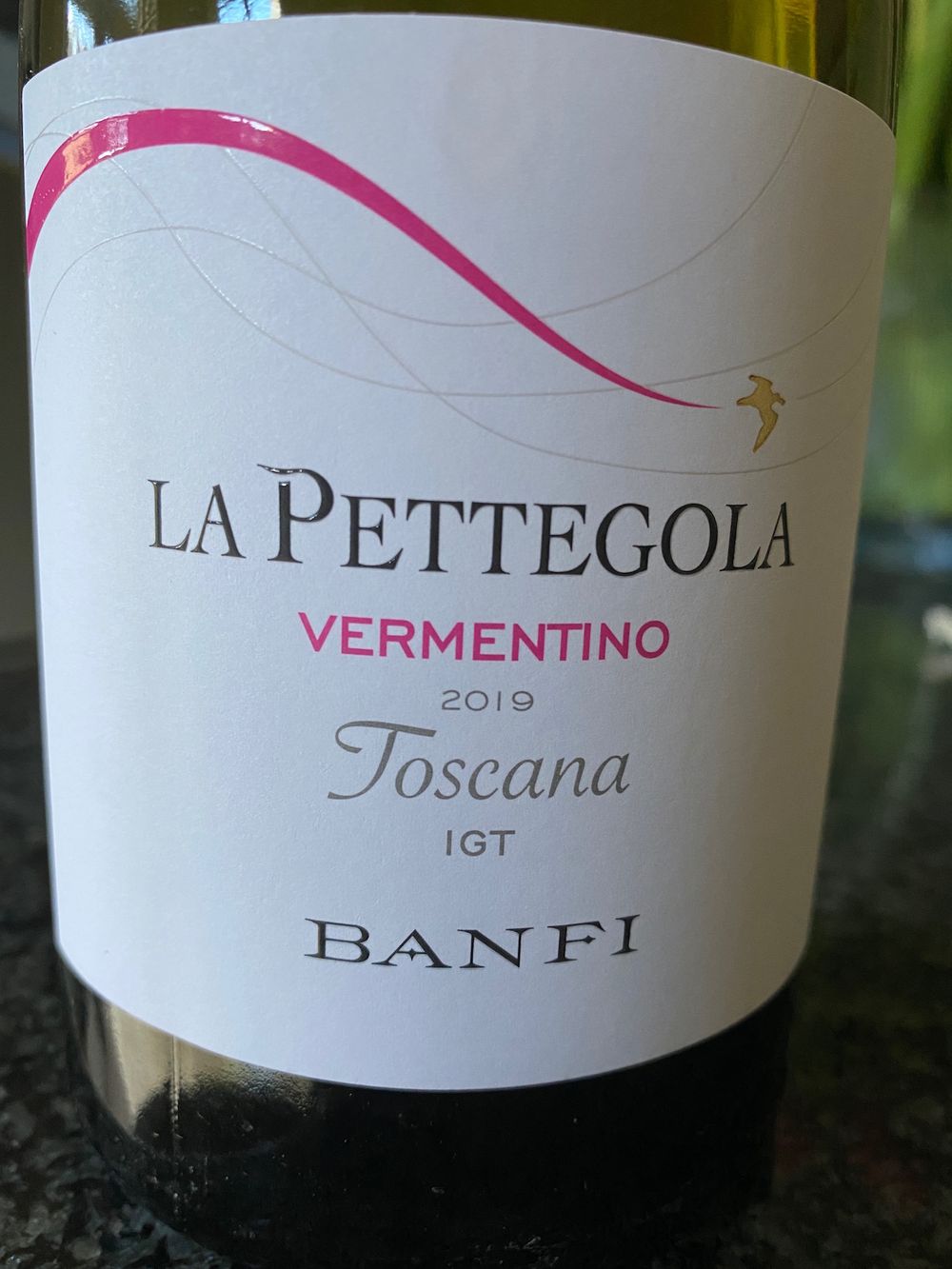
Castello Banfi, La Pettegola Vermentino 2019, Toscana
This is a fairly recent addition to Banfi’s portfolio, which goes to show how many exciting new white wines are coming out of Italy. It is made from 100% Vermentino coming from vines aged 5-10 years old grown on sandstone soils in this Southern Tuscan region of Maremma.
Pale yellow; pretty perfume of lemon and orange blossom, salty sea air, Mediterranean scrub; the palate is fresh, with good body, delicious citrus flavours with a hint of salted, toasted hazelnut. Well made wine with lively acidity, good balance and a lip-smacking finish that highlights just how easy-drinking this is. “For a glass of wine at this time of the morning – this is fantastic!” says Oz. £13-16 RRP.
A Rhône white from the West Bank
Clarke picked a Rhône Blanc for his third wine, citing Vidal-Fleury as being a trailblazer in the production of Condrieu and Côte-Rôtie before it was fashionable to do so.
“Here we have another red wine producer producing a fabulous white wine. Vidal-Fleury was founded in 1781 – making it the oldest continuing winery in the Rhône.”
The old, decrepit winery was where Etienne Guigal had his first job in 1927 and he returned in 1984 to buy the business “I’m surprised Harry Potter didn’t use it as the science laboratory for Hogwarts,” Clarke says. He then went on to explain that blended Rhône whites as we know them today didn’t really take off until 1989 when Guigal bought 10,000 litres of Southern Rhône Viognier to blend into his white.
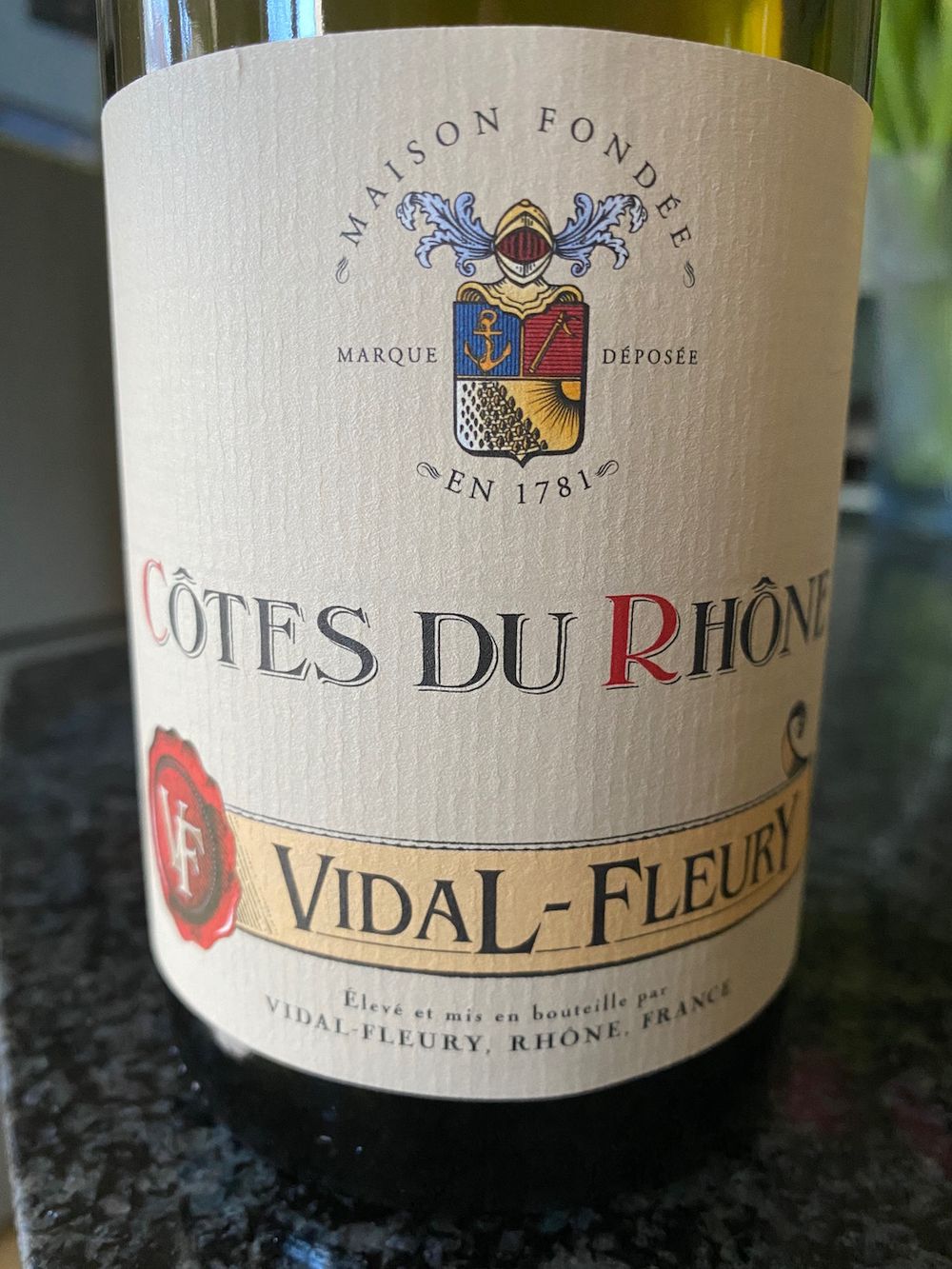
Vidal-Fleury, Côtes du Rhône Blanc, 2019, Rhône
This is an easy-going, quaffable but stylish white Rhône made from 75% Viognier, 15% Grenache Blanc and 10% other varietals.
Pale gold; aromas of ripe apricot and yellow melon, blossom, spice, a hint of almonds; on the palate the wine is rich but fresh at the same time, textured, creamy peaches, balanced acidity, mineral edge and wild herb element. Fresh and easy going, and with a lot more characteristic white Rhône wine flavours than a number of more expensive white Rhônes I’ve tried in recent weeks. (RRP £13.50)
Oz says: “It’s an opinionated, flavourful wine, it’s got a viscosity, apricot lift – and it’s not over-ripened and not over made – you have to let Viognier get ripe but if it‘s over-ripened you lose all the aroma when you do.”
Moving to the coast in Chile
For his fourth wine, Clarke picked a Chardonnay from Chile to explain why he thinks Chile is producing some of the best quality and most affordable Chardonnay in the world today.
Viu Manent is a producer famous for making big powerful reds from 100 year old Malbec vines. When it wanted to produce a white they moved West to Colchagua Valley, right by the sea, 300m up and planted on granitic soils so that they could pick a month later. The combination of the Humboldt current in the Pacific and the winds that are pulled landwards means that the temperature never gets beyond 25°C.
“This is going to be the secret of the new Chile – there’s a fantastic move to the coast,” says Clarke.
Viu Manent ferments whole bunch for three weeks in 40% old French barrel and 60% steel for six months, using three different types of cultured yeast.
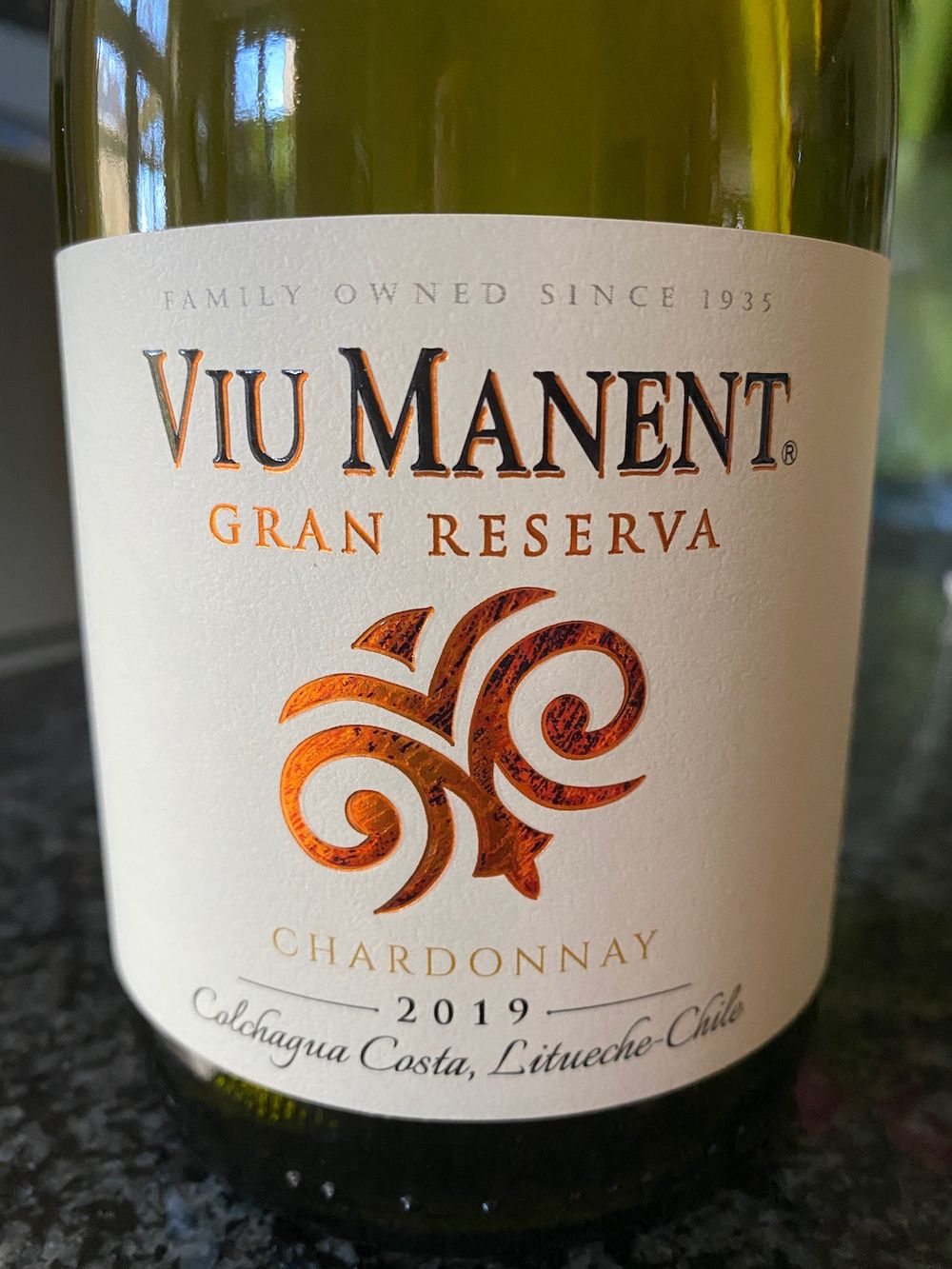
Viu Manent, Gran Reserva Chardonnay, 2019, Valle de Colchagua
Pale to medium gold in colour, the aromatics speak very much of the proximity to the sea and the % of wine that is fermented whole bunch in barrel. There’s attractive ripe orchard fruit, grilled hazelnuts and a wisp of smoke; the palate is textured, bright, firm acidity, reasonably high alcohol at 14%, with a slightly burnt pineapple note that Oz Clarke rightly likened to the burnt jammy edge of the rice pudding, or burnt jam on his mum’s jam tarts – in a good way! The finish is intense and prolonged. RRP £14-15
Making Pinot Noir in the South of France
For the fifth wine Clarke picked a Louis Latour Pinot Noir from Verdun, grown amongst the pine-scented forests of the Garrigue – just one hour’s drive north of St Tropez.
“This wine come from grapes growing on land that hadn’t hosted a vine until 1990, a classic example of why Louis Latour from the battlements of Burgundy steeped in tradition was such a radical thinker. In 1979 he saw demand for Burgundy whites which Burgundy couldn’t supply and then moved to the Ardeche. In 1989 he was faced with a similar problem – the impossibility of supplying reasonably priced, good quality Pinot Noir – so he rejected the gospel in the appellation and said we can take our grape varieties to wherever they will grow.”
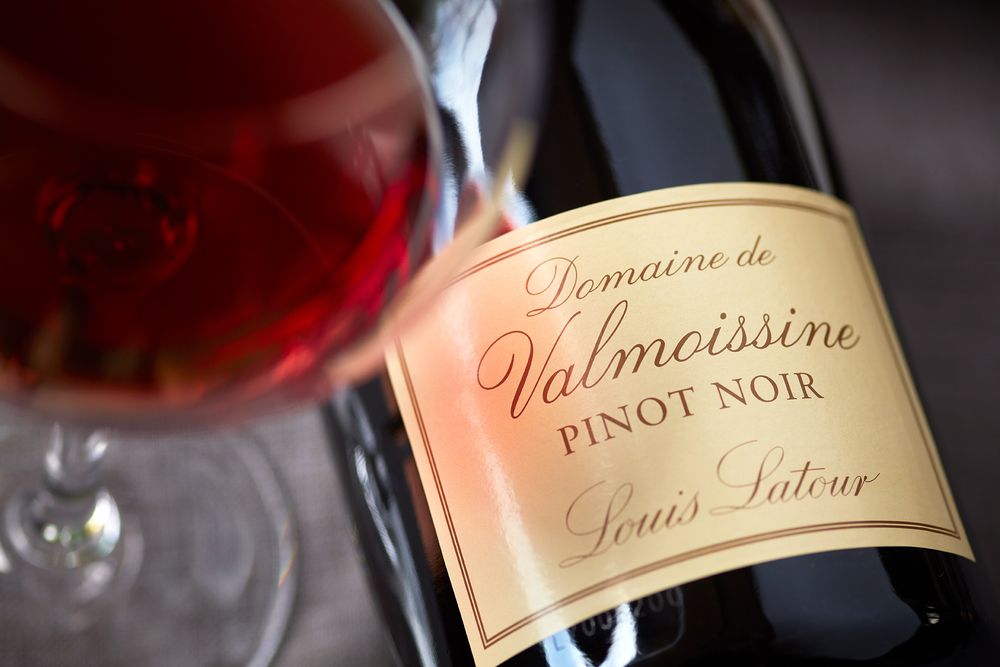
Maison Louis Latour Var
Domaine de Valmoissine Pinot Noir, Louis Latour, 2017
More broody than the Les Pierres Dorées that Latour makes in Beaujolais, the Bellevue is serious, darker with more extracted black fruit (mulberry and bramble) with a touch of Garrigue herbs on the nose. The palate is rounded, structured, considerable tannins with a tasty, savoury quality, a bit of spice with a tart, saline lift on the finish. Made from low-yielding vines, without oak (more controversy!) this is a wine that needs a good hour’s decant before serving, and Clarke recommends not chilling this wine down.
This wine is from Latour’s philosophy that Pinot Noir should be affordable and consistent in quality and price, but also that Provence is more than just producing Rosé for the masses – RRP £12-14.
“No oak, no frills, just the essence – it’s a new way of looking at French Pinot Noir.”
‘Spanish red’ grown in Hawke’s Bay
Last but not least, Clarke picked his sixth innovative wine from New Zealand, Hawke’s Bay no less, where Syrah and Chardonnay are the hero varietals. For this wine from Smith & Sheth, however, the winemakers have dared to make a Spanish style red on the North Island blending Cabernet Sauvignon (for the power and structure), Cabernet Franc (for aromatic lift and freshness) and Tempranillo (that gives the wine real flesh and juiciness), a truly unique NZ blend.
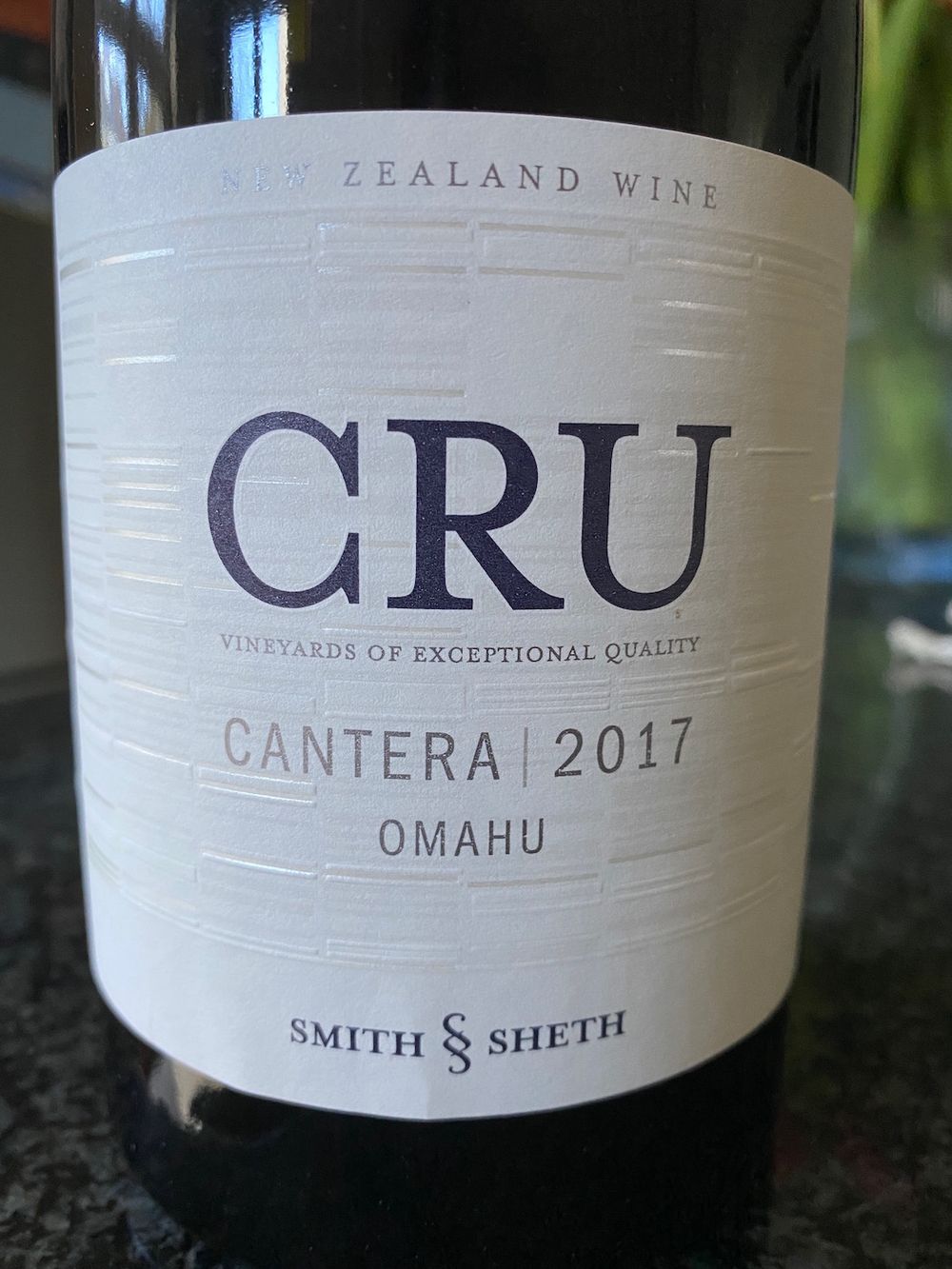
Omahu Cantera, Cru, 2018 Smith & Sheth
This is a big, fresh, juicy wine with intense blackberry fruit, also notes of cassis, peppered beef, liquorice and vanilla; the palate is medium to heavy weight, concentrated but balanced with a nice line in freshness, ripe tannins, heavily textured. Quite savoury and a bit young, and needs a year or two more in the bottle Juicy, structured.
Louis Latour Agencies is a supplier partner of The Buyer. To learn more about them click here.
